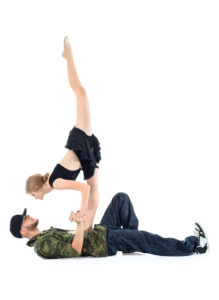
Laban did not choose the term “harmony” in the common sense of something that is euphonious, attractive, or pleasing to the senses. Analogous with music theory, Laban’s notions of harmony incorporate dissonance as well as consonance.
Consequently, for Laban harmonic movement is not necessarily “beautiful movement” according to any kind of social standard. While access to a rich range of movement provides a foundation for movement harmony, Laban affirms that “there are considerations such as individual expressiveness or taste which can influence the personal conception of harmony in movement.”
In other words, Laban respects the individuality of each mover. He notes that “Graceful movements will suit one person more than vital or bizarre movement, or the contrary may be the case. This is a question of individual temperament; some will prefer narrow and restrained movements, others may like to move freely in space, and so on.”
Laban’s harmonic prototypes allow movers to explore space and effort in structured ways. But Laban expects the individual to make these movement models his and her own. He knows that “each choreutic chain can be followed in various ways by the body and its limbs. The same applies to dynamic nuances which appear when performing a chain.” Consequently, Laban omits entirely “all precise instructions as to bodily execution and dynamic intentions.” He challenges the mover to “experiment and find for himself the most harmonious way of executing simple forms.”
Take up Laban’s challenge – participate in the forthcoming Movement Harmony Project: Part 1.
